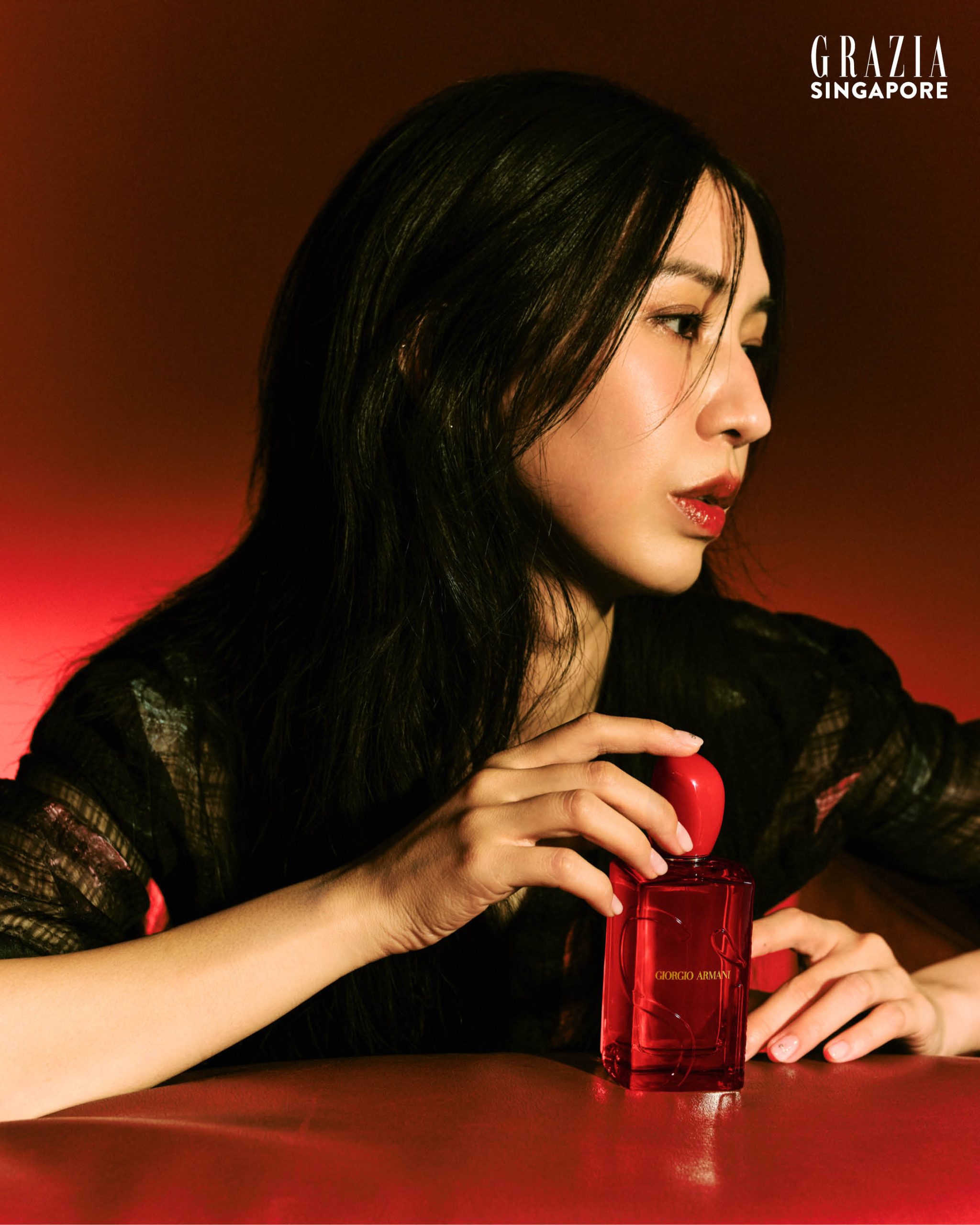
Singapore’s next wave of musicians is not just playing the game, they’re rewriting the score. Bold, genre-blurring and unapologetically themselves, this year’s Bright Young Things are changing the way we hear—and feel—music. Together, these six musicians represent the pulse of a generation: Regina Song, Joyy, Layyi, Estelle Fly, Jasmine Sokko, and Jean Seizure.
Joy Yong has lived with music for as long as she can remember. Classically trained from a young age and dancing since the age of four, performance came naturally to her. Describing herself as a “violinist who dances and sings,” Yong has shared the stage with icons like Stefanie Sun and Angela Zhang. Still, it took a leap of faith for her to formally introduce herself to the world as a musician—something she finally did in 2024 with the release of her debut EP, Made For Skies. Now performing under the stage name Joyy, the singer-songwriter is crafting a signature sound as multifaceted as her artistry.
GRAZIA Singapore (GS): How would you describe your sound in three words—and what do those words say about you?
Joyy (J): Evocative. Introspective. Transcendent. My music is a mirror of my memories, emotions and dreams. I like crafting soundscapes that feel like they belong in a film you haven’t lived through yet. It’s rooted in emotion, but always reaching beyond. I think those words reflect who I am too—quietly intense, constantly seeking, always feeling.
GS: Was there a defining moment when you knew music was your calling?
J: Not a single moment, but a quiet thread that kept pulling me back. I’ve been playing piano and violin, and dancing, since I was four—so music and movement became part of how I understood the world. Eventually, I stopped seeing it as a path to choose and started seeing it as the lens I view everything through.
GS: Growing up in Singapore, how did your environment shape your relationship with music?
J: Singapore is small, which brings a sense of safety—but also limits. There’s always been talent here, but when I was growing up, there were fewer opportunities to discover new music locally. I found music organically through CDs and file-sharing platforms. Today, with Spotify, YouTube and more live festivals, exposure to both local and regional music has grown so much.
But when it came to choosing music as a career, it felt risky—almost irresponsible. There’s a clear, safe path many follow, and music didn’t fall within it. Still, music kept running through my veins, even when I wasn’t actively choosing it. It stayed with me—not as a goal at first, but as something that made me feel alive, free and connected to something larger than the system I grew up in. Eventually, I realised it wasn’t about picking the safest option; it was about choosing what felt most true.
GS: How does your cultural background inform your artistry?
J: I’m Chinese-Singaporean, but I’ve always felt a little in-between—never fully one thing. That duality shows up in my work. I’m drawn to nuance and contrast, to the tension between what’s expected and what’s possible. I don’t always reference culture directly, but it shapes how I see the world, tell stories and carry emotion.
GS: What inspires you to break the mould?
J: I’ve never really fit into one box—I’ve always felt like more of a wanderer or outlier. I was trained in classical music but grew up listening to indie, acid jazz, pop—anything that made me feel something. So for me, breaking the mould isn’t the goal. Blending styles is simply the most honest way to reflect how I experience the world: layered, shifting, and always evolving.
GS: Have you faced any challenges navigating the music scene as a woman—and how have you pushed through?
J: I was fearful about entering the industry, knowing there weren’t many clear roadmaps—especially in a scene that’s still male-dominated. I’ve had my ideas second-guessed, been spoken to condescendingly, and felt that pressure to be palatable: polished, but not too much of anything.
Over time—and with a lot of internal work—I’ve learned to ground myself. Coaching helped me find my voice, to speak with more confidence and stop shrinking just to keep the peace. I’m still learning, but I no longer lead from fear.
GS: What does being young mean to you right now?
J: Being young feels like standing at the edge of something wide open. There’s freedom in not being fully defined yet, but also pressure to make every step count. Sometimes it feels like you have to prove yourself before you even know who you are. I try to see it less as a race, and more as a time to explore, to make mistakes and grow into something that actually feels real.
GS: Do you ever feel underestimated because of your age—or empowered by it?
J: Both. People often associate youth with naivety—but it also means courage, openness, and fresh vision. Being underestimated can be a quiet superpower. You get to surprise people.
GS: Who do you make music for—and who are you speaking to?
J: I make music for the ones who feel too much but say too little. For anyone who’s ever felt a little out of place, or like they’re always moving but not sure where they’re going. The ones searching for freedom within themselves. And honestly, for my younger self—for the girl who didn’t know she was allowed to want more.
PHOTOGRAPHY ZANTZ HAN
CREATIVE DIRECTION KELLY HSU
PRODUCER CHERYL LAI-LIM
STYLING TOK WEI LUN
HAIR & MAKEUP KAT ZHANG / THE SUBURBS STUDIO
VIDEOGRAPHERS JAYA KHIDIR AND SHERMAN SEE-THO
STYLING ASSISTANT CRYSTAL LIM
HAIR & MAKEUP ASSISTANTS NICOLE ANG AND SVETA KLYN / THE SUBURBS STUDIO
PHOTOGRAPHY ASSISTANTS MICHELLE YAP AND PENG SHENG
READ MORE
Regina Song Is the Voice of a New Generation
